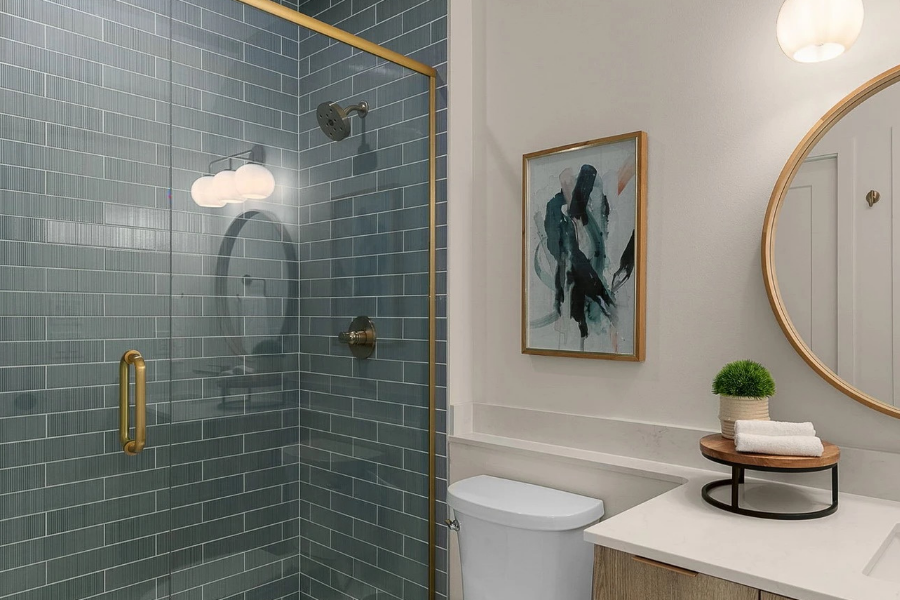Thinking about remodeling your bathroom? Whether you’re tired of outdated fixtures or crave a more luxurious space, a bathroom remodel can transform your home. But where do you start? Don’t worry! This comprehensive guide will walk you through everything you need to know about remodeling your bathroom, from planning and budgeting to choosing materials and fixtures.
Why Remodel Your Bathroom?
Remodeling a bathroom is more than just a trend—it’s an investment. Here are some compelling reasons why you should consider it.
1. Increase Home Value
A well-done bathroom remodel can significantly boost your home’s resale value. Potential buyers often look for modern, stylish bathrooms, and a renovated bathroom can make your home stand out in the market.
2. Improve Functionality
If your bathroom feels cramped or outdated, a remodel can improve its functionality. You can reconfigure the layout, add more storage, or upgrade fixtures to better suit your needs and lifestyle.
3. Enhance Aesthetics
Who doesn’t want a beautiful bathroom? Remodeling allows you to create a space that reflects your personal style, whether it’s sleek and modern, cozy and rustic, or something in between.
Planning Your Bathroom Remodel
Before you dive into tearing down walls, it’s crucial to plan. Good planning ensures that your remodel stays on budget and on schedule.
1. Setting a Budget
Determine how much you’re willing to spend on your remodel. This will guide your decisions on materials, fixtures, and whether to hire professionals. Be sure to include a buffer for unexpected expenses.
2. Designing the Layout
Think about how you use your bathroom and what changes could make it more functional. Do you need a double sink? More counter space? A bigger shower? Sketching out a new layout can help visualize the transformation.
3. Choosing a Style
From contemporary to vintage, your bathroom’s style sets the tone for the entire remodel. Browse design magazines, visit showrooms, and create a mood board to gather inspiration.
Key Elements of a Bathroom Remodel
Several elements come together to create a successful bathroom remodel. Let’s break down the main components.
1. Flooring Options
The floor is a key feature of any bathroom. Choose a durable, water-resistant material like ceramic tiles, vinyl, or natural stone. Heated flooring is a luxurious upgrade that adds comfort.
2. Wall Treatments
Wall treatments can drastically change the look of your bathroom. Consider tile, paint, or even wallpaper. For a spa-like feel, opt for materials like marble or glass.
3. Bathroom Fixtures
Fixtures are the jewelry of your bathroom. Upgrading these can make a big impact.
3.1. Showers and Bathtubs
Decide between a shower, bathtub, or both. Walk-in showers are popular for their modern look and convenience, while freestanding tubs add a touch of luxury.
3.2. Sinks and Vanities
Choose a vanity that provides adequate storage and complements your style. Vessel sinks are trendy and stylish, while undermount sinks offer a sleek, clean look.
4. Lighting Solutions
Good lighting is essential in a bathroom. Layer your lighting with a mix of ambient, task, and accent lighting. Consider installing dimmers for adjustable lighting levels.
5. Storage Solutions
Adequate storage keeps your bathroom organized and clutter-free. Built-in shelves, medicine cabinets, and vanity drawers are practical options. Consider using vertical space for additional storage.
DIY vs. Hiring Professionals
Should you tackle the remodel yourself or hire professionals? Let’s weigh the options.
1. Pros and Cons of DIY
DIY can save money and give you a sense of accomplishment. However, it requires time, skill, and patience. Mistakes can be costly and time-consuming to fix.
2. When to Hire a Professional
For complex tasks like plumbing, electrical work, and large-scale remodels, it’s best to hire professionals. They bring expertise and can ensure the job is done right and up to code.
Sustainable Bathroom Remodel Ideas
Going green is more than a trend—it’s a responsibility. Here’s how to make your bathroom remodel eco-friendly.
1. Eco-Friendly Materials
Choose sustainable materials like bamboo flooring, recycled glass tiles, and low-VOC paints. These are not only better for the environment but also for your health.
2. Water-Saving Fixtures
Install low-flow toilets, showerheads, and faucets to reduce water consumption. These fixtures can significantly lower your water bills and help conserve this precious resource.
Common Bathroom Remodel Mistakes to Avoid
Avoid these pitfalls to ensure your remodel goes smoothly:
- Skipping the Planning Stage: Proper planning is crucial to avoid costly mistakes.
- Ignoring Ventilation: Good ventilation prevents mold and mildew.
- Choosing Style Over Function: While aesthetics are important, don’t sacrifice functionality for style.
- Overlooking Storage Needs: Plan for adequate storage to keep your bathroom organized.
Conclusion
Remodeling your bathroom can be a rewarding project that enhances both your home’s value and your daily life. With careful planning and consideration of your needs and style, you can create a beautiful, functional space that you’ll enjoy for years to come. Ready to take the plunge?
FAQs
Q1: How long does a bathroom remodel typically take?
A1: On average, a bathroom remodel can take anywhere from 3 to 8 weeks, depending on the scope of the project.
Q2: How much does a bathroom remodel cost?
A2: Costs vary widely based on the extent of the remodel and the materials used. On average, homeowners spend between $10,000 and $20,000.
Q3: Do I need a permit for a bathroom remodel?
A3: Permits are often required for major changes, especially those involving plumbing and electrical work. Check with your local building authority.
Q4: Can I remodel my bathroom myself?
A4: Yes, but it depends on your skill level. Simple tasks like painting and installing fixtures can be DIY projects, but complex tasks might require a professional.
Q5: What are the latest trends in bathroom design?
A5: Popular trends include minimalist designs, bold tile patterns, freestanding tubs, and smart technology like heated floors and digital showers.




